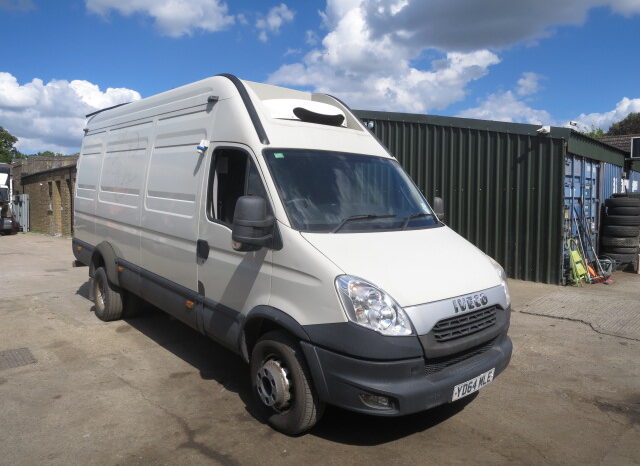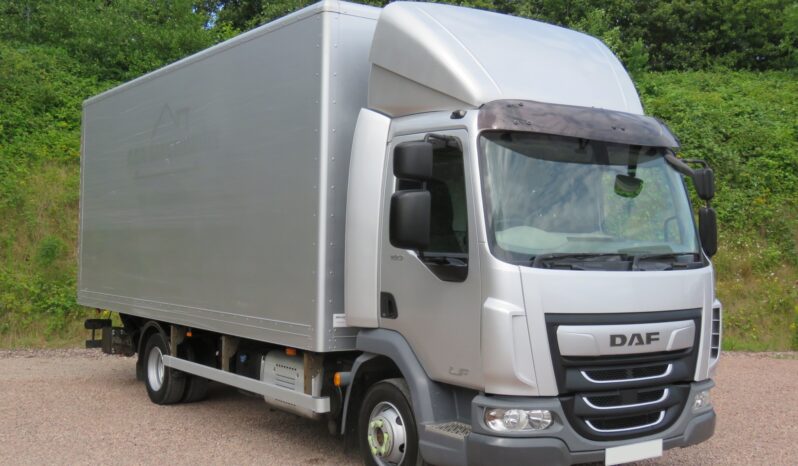Most businesses with a need to move things around will start off with a van or two, as they are straightforward to drive (and find drivers for), to buy and to service. Over time, the number of vans may well grow, but is using a load of vans the most efficient way of operating when a much smaller number of trucks would do?
Vans vs 7.5 tonners – Payloads
When we are talking about vans, we mean light commercial vehicles that have a maximum gross vehicle weight of 3.5 tonnes – these can be driven on a car licence and require no additional testing or licencing. There are larger versions that look exactly the same as these 3.5 tonners – the Iveco Daily ‘van’ range goes right up to 7.2 tonnes GVW (more on these later) but they cannot be driven on a standard car licence and require an Operator’s Licence in the same way a ‘real’ truck does.
There is conundrum as far as vans are concerned at 3.5 tonnes GVW – the larger the vehicle, the smaller the payload it can carry. A long wheel base, high roof van weighs more than a short wheel base, low roof version. If you opt for the highest and longest of the panel van range, then you will be lucky to carry a tonne on board!
It’s true that a 7.5 tonne truck will carry a lot more than a 3.5 tonner. Looking at the best-seller – the DAF LF range, the weight of the truck as a chassis cab is somewhere in the region of 3.5 tonnes, depending on the length of the chassis and whether it has a day cab, sleeper cab or crew cab. This leaves about four tonnes for the driver, passengers fuel and, most importantly, the body. Truck bodies can weigh much less than a tonne for a simple flat body or curtainsider, but boxes – especially refrigerated and insulated bodies will weigh more. This means that the effective payload of a 7.5 tonne truck is at least three times that of a 3.5 tonne van. In addition, there are models of truck, such as the Isuzu N75 and Mitsubishi Canter that weigh less and have an even greater payload therefore.
Why bother with a van then if it can’t carry much?
The simple answer is that vans are a lot easier to run than a truck. If your duty cycle is best suited by a van, then a van it should be. If you are sending two vans on one job, or running one van backwards and forwards on the same route multiple times in a day, then you should be looking seriously at a truck.
Sometimes vans are chosen for urban operations because they look smaller than a truck and are easier to manoeuvre around city streets. This may mean that the van has to return to base to reload before finishing the deliveries. Buying a commercial vehicle that looks like a van but can carry up to almost four tonne payloads would make the most sense. Ford Transits are available to 4.5 tonnes GVW, Mercedes Sprinters to 5 tonnes and Iveco Daily to 7.2 tonnes GVW.

Downsides of Running a Truck
The two main downsides of running a medium weight truck compared to a van are the availability of drivers with the appropriate licence and the additional regulatory hurdles that you will need to comply with.

Driver Licencing
To drive a vehicle over 3.5 and up to 7.5 tonnes GVW a driver will need a C1 licence. This is a cut-down version of the ‘proper’ category ‘C’ HGV licence. Whilst it is cheaper and easier to obtain this licence, it is still more difficult than simply using a car licence as is the case for a van. There is one exception to the rule – if a driver passed their car test prior to 1st January 1997, then they do not require the C1 as it is already included on their licence.
Operators Licencing
You will need to apply for an ‘O-Licence’ for any vehicle over 3.5 tonnes being used for hire or reward. There are plenty of hurdles to overcome, including being able to demonstrate that you have the money in place to be able to maintain the truck and that you have somewhere suitable to keep the vehicle and that you are competent to operate it. The government has produced an easy-to-understand guide for further reading here.
Preventative Maintenance Inspections
As part of being granted an O-Licence, you undertake to have the vehicle regularly inspected. This is recommended to be every six weeks for new operators and should be carried out by someone competent (usually at a dealership or truck workshop). To carry out these inspections yourself you would need to make sure all the necessary facilities are to hand. These are not required for a 3.5 tonne van.
Summary Pros and Cons of Vans vs Trucks
| Van | 7.5 Tonne Truck | |
| Car licence | Yes | No (unless Grandad’s rights) |
| Statutory Inspections (PMI) | Annual MoT | 6 Weekly & Annual MoT |
| Operator’s Licence | No | Yes |
| C1 Licence | Not required | Yes |
Van or Truck?
This all depends on your individual circumstances. Ask yourself these important questions and
- Would you like to carry much more than 1 tonne at a time?
- What’s the local availability of ‘car’ drivers?
- What’s the local availability of category C1 drivers?
- What is your financial situation?
- Are your premises suitable for a truck?
